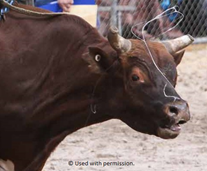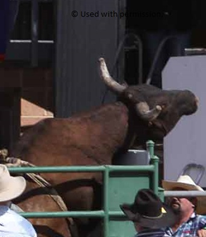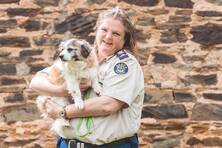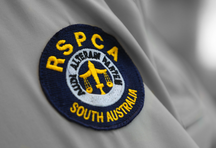Science ignored as Adelaide Entertainment Centre hosts event reliant on animals’ fear responses
November 08, 2019Spurs, flank straps and fireworks unacceptable way to treat cattle – RSPCA
The RSPCA is disappointed that the Adelaide Entertainment Centre has again failed to fulfil its corporate social responsibility to ensure events involving animals feature community expectations regarding humane treatment of animals.
For the third consecutive year, the Centre is tomorrow night hosting a rodeo event run by Professional Bull Riders (PBR) Australia inside the Hindmarsh facility. As with other rodeo events, the RSPCA is opposed to bull riding because of the potential for significant injury, suffering and stress to the animals involved.
“Animal welfare science shows that good welfare for cattle can only be achieved when cattle are handled using low stress methods,” RSPCA South Australia’s Animal Welfare Advocate Dr Rebekah Eyers said.
“PBR’s bull-riding events contradict all the principles for humane handling.
“Pyrotechnics, laser light shows, screaming audiences and loud music surround the bulls as they are forced to buck in an extreme manner for human entertainment.
“It is not about how well the bulls are fed, sheltered or transported outside the performance arena; the problem is the anxiety and suffering the bulls experience whilst being provoked to extreme bucking and in the 48 hours after the event.”
RSPCA is also concerned at the use of spurs and flank straps to provoke extreme and unnatural bucking.
“Evidence shows that hard metal spurs attached to the riders’ boots are often used to kick the bull in the flank or belly to increase bucking,” Dr Eyers said.
“Similarly, flank straps are tightened on bulls prior to release from the chute, and the resulting pressure on the sensitive underbelly causes discomfort, possibly pain, to make bulls buck more violently.
“Indeed, when these implements were prohibited in some USA jurisdictions, rodeos in those areas shut down – there is nothing natural about how these bulls are bucking and no evidence that they enjoy being provoked to do it.”
Dr Eyers described the animal welfare science on bull-riding as “compelling”, highlighting a study by Germany’s Registered Association of Veterinarians for Animal Protection. The study reviewed the impact of flank straps and spurs on animals and concluded that they should be prohibited.1
Recent research also exposes serious transparency gaps in the rodeo (bucking bull) sector.
“We do not know what training methods are used for bulls, the number of bulls used for Australian extreme bucking events or even the post-event injury rates for bucking bulls – being a prey animal, bulls often mask their injuries for at least 48 hours after the event,” Dr Eyers said.
“We will not forget Crime Scene, the bull who broke a leg and was forced to walk from the Hindmarsh arena to be euthanased in 2017, or the six bulls who died at Queensland rodeo events in the past 18 months and the bull who was euthanased due to a leg injury last month in Tasmania.
“We again urge the Adelaide Entertainment Centre to consider its corporate social responsibility and replace this outdated event with a more ethical offering.”

Intense facial expression, excess drooling of mucous saliva, open mouth, flared nostrils indicating fear and stress.

Rearing out of chute likely due to fear and stress.
Information about RSPCA’s concerns about rodeo events can be found at:
https://kb.rspca.org.au/knowledge-base/what-are-the-animal-welfare-issues-associated-with-bull-riding/




